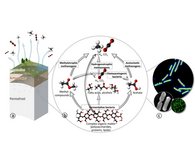Life at its Limits: Biodiversity and Activity of Microorganisms in deep Permafrost – BioFrost
Funding: European Commission, Horizon 2020 Research and Innovation Programme
Status: current
Cooperations:
Dr. Niculina Musat, Helmholtz Centre for Environmental Research (UFZ), Leipzig, Germany
Dr. Hryhoriy Stryhanyuk, Helmholtz Centre for Environmental Research (UFZ), Leipzig, Germany
Prof. Dr. Nediljko Budisa, Technical University Berlin, Germany
The cold deep biosphere, which includes permafrost, is one example of such a part of Earth that continues nowadays to be largely unexplored. Advances in the explorative and experimental analytical capabilities over the past decade have shown unambiguously that biological activities continue far below 0°C.
BioFrost aims at demonstrating that in the deep frozen permafrost microorganisms may be alive and active. Many are the aspects involved in the definition of ´being alive and active´, i.e. how many are the cells, to which microbial groups they belong to, what is their metabolic state and to what extent, through their bio-products (e.g. freezing-point depression molecules and biosurfactants), they can enhance the habitability of their surroundings. All these aspects will be addressed in correlation to each other by using an experimental workflow based on stable isotope probing (SIP), which is ideal, and extremely powerful, approach to obtain a large set of complementary information. Another major strength of this study is that experiments at the community-level will be integrated and compared to single cell analysis with nanoSIMS (nanoscale Secondary Ion Mass Spectrometry), thus offering the opportunity to describe the real contribution of individual microorganisms to the functioning of their own population.
This study is expected to contribute to our understanding not only of permafrost´s biodiversity and activity but also of one of the most significant new concepts of modern microbiology, the heterogeneity of single microbial cells and the role of it in the context of the ecosystem´s overall functioning.


